预约演示
更新于:2025-08-23
Trientine tetrahydrochloride
四盐酸曲恩汀
更新于:2025-08-23
概要
基本信息
原研机构 |
非在研机构- |
最高研发阶段批准上市 |
首次获批日期 欧盟 (2017-09-05), |
最高研发阶段(中国)批准上市 |
特殊审评优先审评 (中国)、孤儿药 (澳大利亚) |
登录后查看时间轴
结构/序列
分子式C6H22Cl4N4 |
InChIKeyOKHMDSCYUWAQPT-UHFFFAOYSA-N |
CAS号4961-40-4 |
关联
6
项与 四盐酸曲恩汀 相关的临床试验NCT07010575
Decentralized Study to Assess Patient Treatment Preference Comparing Their Current Standard-of-care Wilson's Disease (WD) Treatment to a New Trientine (TETA) 4HCl Formulation.
Decentralized study to assess patient reported treatment satisfaction comparing their current standard-of-care Wilson's Disease (WD) treatment with a new once-daily Trientine (TETA) 4HCl formulation.
开始日期2025-07-15 |
申办/合作机构 |
CTR20244688
盐酸曲恩汀片在健康受试者中空腹生物等效性试验
主要目的: 考察中国健康受试者在空腹状态下单次口服四川科瑞德制药股份有限公司生产的盐酸曲恩汀片与参比制剂体内药代动力学特征,评价两种制剂的生物等效性。
次要目的:评价单次口服盐酸曲恩汀片受试制剂及参比制剂在中国健康受试者中的安全性。
开始日期2024-12-28 |
申办/合作机构 |
NCT06128954
A Phase I, Single Centre, Randomised, Interventional, Open-Label, Cross-Over Study to Evaluate the Pharmacokinetics (PK) and the Safety and Tolerability of a Total Daily Dose of 900mg of TETA 4HCL, Comparing a New Once Daily TETA 4HCL Formulation (300mg) (3x300mg Trientine Base Tablets, OD) With the Current Marketed Cuprior® Formulation (150mg) (3x150mg Trientine Base Tablets, BD) in Adult Healthy Male and Female Participants
A randomised, open-label study evaluating the pharmacokinetics, safety, and tolerability of a new once daily dose of 900mg of TETA 4HCL by comparing it against the current marketed Cuprior® formulation (450mg trientine base, twice daily) in healthy male and female participants.
开始日期2024-01-16 |
申办/合作机构 |
100 项与 四盐酸曲恩汀 相关的临床结果
登录后查看更多信息
100 项与 四盐酸曲恩汀 相关的转化医学
登录后查看更多信息
100 项与 四盐酸曲恩汀 相关的专利(医药)
登录后查看更多信息
288
项与 四盐酸曲恩汀 相关的文献(医药)2025-12-01·Current Neurology and Neuroscience Reports
Pitfalls in the Diagnosis of Wilson Disease
Review
作者: Chakravarty, Ambar ; Roy, Debasish ; Mukherjee, Angshuman
PURPOSE OF REVIEW:
Wilson disease (WD), an uncommon autosomal recessive (AR) hereditary disorder characterized by abnormal accumulation of copper primarily in the liver and secondarily in other organs like the brain, is caused by a deficiency in the ATP7B transporter gene. The key to successful therapy is early diagnosis.
RECENT FINDINGS:
Mutant genes need to be inherited from both parents for phenotypic expression. The ATP7B gene located on chromosome 13q14.3 comprises 20 introns and 21 exons, encodes a protein of 165 amino acids, and this helps in incorporation of copper into ceruloplasmin, the copper binding protein. So far, more than 800 mutations have been reported, of which 380 have confirmed involvement in the pathogenesis of WD. The most common mutations are H1069Q and R778L in European and Asian populations respectively. Approximately 90%-98% of WD subjects are heterozygous, showing different mutations in each of the alleles encoding the ATP7B. Conversely, the phenotype and the penetrance of WD can be extremely variable. Even patients carrying two disease-causing mutations do not necessarily have a demonstrable alteration of copper metabolism. Considering the possibility of late-onset disease, asymptomatic cases, and phenotypic variability, it is crucial to evaluate previous and future generations of the index case. WD ranges from being asymptomatic in some patients to result in acute liver failure and/or a variety of neuropsychiatric disorders among others. Although WD may be present at any age, is more common between the ages of 5 and 35 years. However, it should be investigated in patients with liver failure of unknown cause and those with liver disease associated with neuropsychiatric symptomatology. Diagnosis requires a combination of clinical signs and symptoms, as well as relevant diagnostic tests such as measurement of serum ceruloplasmin, urinary excretion of copper, liver biopsy or genetic testing. Treatment is lifelong and includes chelating agents (penicillamine and trientine) and inhibitors of copper absorption (zinc salts). Liver transplant is an option for patients with end-stage liver disease. The key to successful therapy is early diagnosis.
2025-08-01·JOURNAL OF PHARMACY PRACTICE
D-Penicillamine Induced Myelotoxicity: A Unique Case
Article
作者: Sigala, Mariah I. ; Abdulla, Aliya ; Rezvani, Aryan ; Nelsen, Christopher
Purpose:
A case of D-penicillamine-related myelotoxicity in a patient with Wilson’s disease is reported.
Summary:
There is a paucity of literature regarding D-penicillamine (DPA) induced myelotoxicity in the setting of Wilson’s disease (WD). A 22-year-old male presented with a 1-week history of bleeding gums and dizziness. Four months prior, he had been diagnosed with Wilson’s disease and started on a regimen of DPA. His blood counts demonstrated profound pancytopenia. Due to concern for suspected drug-induced myelotoxicity, DPA was discontinued. Parvovirus B19, Epstein-Barr virus, cytomegalovirus, and varicella zoster virus polymerase chain reaction studies were negative and there was no evidence of hematological malignancy. Bone marrow biopsy demonstrated hypocellularity and trilineage hypoplasia with corresponding aspirate flow cytometry confirming the absence of acute leukemia. The patient was started on subcutaneous granulocyte-colony stimulating factor, provided transfusion support with packed red blood cells and platelets. Despite these measures, his blood count failed to recover, and he was discharged on eltrombopag 150 mg daily with plans for outpatient transfusion support. DPA was permanently discontinued, and he was prescribed trientine 750 mg daily. Unfortunately, his myelotoxicity remained consistent, requiring regular transfusions. He is currently undergoing evaluation for bone marrow transplant.
Conclusion:
DPA-induced myelotoxicity is a rare clinical entity. Our case demonstrates a unique clinical presentation of this phenomenon. Guidelines to mitigate the risk of and treat this toxicity remain to be determined.
2025-05-01·FREE RADICAL BIOLOGY AND MEDICINE
N,N'-bis(2-mercaptoethyl)isophthalamide (NBMI) as a novel chelator for Wilson's disease
Article
作者: Betharia, Swati ; Kim, Jonghan ; Böhlke, Mark ; Gadde, Rajitha ; Shah, Shrey
Wilson's Disease (WD) is a rare autosomal recessive disorder caused by mutations in the ATP7B gene. These mutations lead to defective copper (Cu) transport and to accumulation of Cu in tissues, primarily in the liver and brain. Current treatment options such as D-penicillamine, trientine, and zinc salts focus on increasing Cu excretion or reducing Cu absorption, but often cause debilitating side effects. N,N'-bis(2-mercaptoethyl)isophthalamide (NBMI) is a lipophilic thiol-based compound originally developed for environmental decontamination. It has been shown to chelate toxic metals such as mercury, lead, and cadmium. This study was designed to evaluate the efficacy of NBMI to mitigate Cu overload using both in vitro and in vivo models of WD. HepG2 cells with the ATP7B gene knocked down had increased sensitivity to copper sulfate (CuSO4) compared to wild-type (WT) cells, validating the cell model for WD. Pretreatment with NBMI (2.5-50 μM) improved cell viability, reduced Cu-induced oxidative stress, decreased metallothionein levels, mitigated resulting DNA damage, and reduced overall levels of free intracellular Cu. In an established toxic milk mouse (tx-J) model of WD, 1% dietary NBMI effectively lowered hepatic, cerebral, and renal Cu levels. Treatment with 1% NBMI also improved liver function, as evidenced by reduced ALT levels and normalized hepatocyte morphology. Tx-J mice displayed higher liver-to-body weight ratios compared to WT mice, and treatment with 1% NBMI effectively reduced this ratio. While NBMI did not impact the elevated white blood cell counts and low platelet levels characteristic of tx-J mice, it also did not cause any detrimental effects on red blood cell, hemoglobin, and hematocrit levels. This dose of NBMI also restored homeostasis of other dysregulated essential metal ions in tx-J mice. These findings suggest that dietary administration of NBMI effectively chelates excess free Cu, ameliorates WD symptoms and offers a promising alternative to existing chelators.
29
项与 四盐酸曲恩汀 相关的新闻(医药)2025-04-28
IN013 restores functional protein levels to reduce systemic copper build-up in patients with Wilson’s disease. Image credit: Shutterstock / Kateryna Kon.
The US Food and Drug Administration (FDA) has granted rare paediatric disease and orphan drug designations for IN013, Innorna’s mRNA therapeutic for Wilson’s disease.
China-headquartered Innorna will now be in line for tax credits for US-based clinical trials. If IN013 is approved, the potential for seven years of market exclusivity in the designated indication, in accordance with orphan drug status benefits.
The rare paediatric disease designation, meanwhile, given to biotechs developing treatments for diseases that affect fewer than 200,000 US paediatric patients, could mean Innorna receives a priority review voucher (PRV) if the therapy is approved.
This voucher would allow the company to fast-track a future candidate of its choice through FDA review, meaning it will reach the market four months sooner if approved. Innorna could also sell the voucher for a quicker cash injection – vouchers have typically
been sold for around $100m
over the past few years.
Wilson’s disease is a rare inherited disease that causes copper levels to build up in the body’s organs, including the liver and brain. The disease is caused by mutations in the ATP7B gene, which normally encodes for the protein responsible for eliminating excess copper. Symptoms of the illness include hepatic and neurological damage, ocular abnormalities, and kidney injury, among others. It is estimated that one in every 30,000 individuals is affected by the disease, with isolated populations at higher risk due to consanguineous marriages.
The current standard of care is the administration of copper chelating agents – compounds that bind to copper ions to reduce toxicity and facilitate the removal. In 2022, the FDA greenlit the first new treatment for Wilson’s disease in 30 years, Orphalan’s Cuvrior (trientine tetrahydrochloride). Comprising a copper chelating agent, Cuvrior is for patients who are de-coppered and able to take D-penicillamine, another drug approved for the disease.
GlobalData Strategic Intelligence
US Tariffs are shifting - will you react or anticipate?
Don’t let policy changes catch you off guard. Stay proactive with real-time data and expert analysis.
By GlobalData
Learn more about Strategic Intelligence
Innorna states that current treatments offer limited efficacy and carry risks, such as hepatorenal toxicity or exacerbated neurological symptoms. Some Wilson’s disease patients taking penicillamine have experienced
nervous system deterioration
.
Unlike current approaches that regulate copper levels downstream, Innorna’s IN013 enables the production of the ATP7B protein. The biotech states its asset, developed on an mRNA lipid nanoparticle platform, can restore functional protein levels to reduce systemic copper build-up.
Other companies are also developing new treatments for Wilson’s disease. Vivet Therapeutics and Pfizer are
developing a gene therapy
called VTX-801, currently in a Phase I/II trial (NCT04537377). The candidate acts by inserting a fully functional version of ATP7B into the body.
The FDA designations for Innorna come at a time of regulatory spotlight on rare disease pipelines, amid agency job cuts by US President Donald Trump and programme expirations. The PRV programme for paediatric rare diseases, for example, entered its ‘sunsetting’ phase in December 2024 after US Congress failed to reauthorise it.
Experts have said
the programme’s expiration, along with reduced FDA capacity, could slow down rare disease development.
mRNA vaccine coverage on Pharmaceutical Technology is supported by Trilink
.
Editorial content is independently produced and follows the
highest standards
of journalistic integrity. Topic sponsors are not involved in the creation of editorial content.
Free Whitepaper
Enhancing Potency, Stability, and Efficiency in mRNA
Read this technical note to explore the frontiers of mRNA capping in advanced therapeutic development. As mRNA-based treatments evolve, optimizing capping strategies becomes critical for enhancing stability, translation efficiency, and potency. This comparative analysis of TriLink’s CleanCap® technologies versus traditional enzymatic capping reveals the key innovations setting new benchmarks. Discover how co-transcriptional methods, structural modifications, and dose-sparing potential are accelerating the path from synthesis to impactful protein expression in both research and therapeutic settings.
Thank you.
You will receive an email shortly. Please check your inbox to download the Whitepaper.
By Trilink Thematic
By downloading this Whitepaper, you acknowledge that GlobalData may share your information with
Trilink Thematic
and that your personal data will be used as described in their
Privacy Policy
疫苗上市批准孤儿药信使RNA临床研究
2025-04-20
·信狐药迅
本周药品注册受理数据,分门别类呈现,一目了然。(4.14-4.20)新药上市申请药品名称企业注册分类受理号玛硒洛沙韦片南京征祥医药有限公司1CXHS2500029卓乐替尼片北京诺诚健华医药科技有限公司1CXHS2500028布瑞哌唑口溶膜国药瑞福莱药业有限公司2.2CXHS2500031布瑞哌唑口溶膜国药瑞福莱药业有限公司2.2CXHS2500030新药临床申请药品名称企业注册分类受理号HS387片浙江海正药业股份有限公司1CXHL2500402HS387片浙江海正药业股份有限公司1CXHL2500401HS387片浙江海正药业股份有限公司1CXHL2500400BW-20507注射液上海舶望制药有限公司1CXHL2500388WBD156胶囊韦恩生物科技有限公司1CXHL2500397WBD156胶囊韦恩生物科技有限公司1CXHL2500396WBD156胶囊韦恩生物科技有限公司1CXHL2500395HSK45030分散片西藏海思科制药有限公司1CXHL2500391HSK45030分散片西藏海思科制药有限公司1CXHL2500390102D-6干混悬剂卡文迪许(泰州)药业有限公司1CXHL2500389PTT-621片北京炎明生物科技有限公司1CXHL2500399PTT-621片北京炎明生物科技有限公司1CXHL2500398KY2液体硬胶囊深圳开悦生命科技有限公司1CXHL2500387YJH-012注射液丽珠医药集团股份有限公司1CXHL2500386GD-19乳状注射液天津谷堆生物医药科技有限公司2.1CXHL2500385CX001缓释片重庆华森制药股份有限公司2.2CXHL2500394CX001缓释片重庆华森制药股份有限公司2.2CXHL2500393CX001缓释片重庆华森制药股份有限公司2.2CXHL2500392注射用HDM2020杭州中美华东制药有限公司1CXSL2500317AK2024 注射液安徽安科生物工程(集团)股份有限公司1CXSL2500318ZVS101e注射液北京中因科技有限公司1CXSL2500319J002温州医科大学1CXSL2500315J002温州医科大学1CXSL2500314YOLT-101注射液尧唐(南京)生物科技有限公司1CXSL2500313HF158K1杭州高田生物医药有限公司1CXSL2500312HFK2杭州高田生物医药有限公司1CXSL2500311SSS55注射液沈阳三生制药有限责任公司1CXSL2500310注射用HY05350四川汇宇海玥医药科技有限公司1CXSL2500316注射用HS-20093上海翰森生物医药科技有限公司1CXSL2500302注射用XNW27011上海信诺维生物医药有限公司1CXSL2500305AI-081注射液南京昂科免疫生物医药有限公司1CXSL2500304AL-001眼用注射液北京安龙合生药业有限公司1CXSL2500301SHR-4506注射液苏州盛迪亚生物医药有限公司1CXSL2500300GB261注射液上海坦蒂生物医药科技有限公司1CXSL2500299SCTB39G注射液神州细胞工程有限公司1CXSL2500307DMR2301注射液上海多米瑞生物技术有限公司1CXSL2500308SHR-2173注射液广东恒瑞医药有限公司1CXSL2500298人脐带间充质干细胞注射液源品细胞生物科技集团有限公司1CXSL2500297注射用重组A型肉毒毒素(Sf9细胞,150 kD天然氨基酸序列)苏州若弋生物科技有限公司2.4CXSL2500309仿制药申请药品名称企业注册分类受理号地氯雷他定口服溶液河南华雒康润药业有限公司3CYHS2501488坎地沙坦酯氢氯噻嗪片(Ⅱ)江苏和晨药业有限公司3CYHS2501500盐酸卡利拉嗪胶囊浙江京新药业股份有限公司3CYHS2501485盐酸卡利拉嗪胶囊浙江京新药业股份有限公司3CYHS2501484对乙酰氨基酚维生素C泡腾片上海欣峰制药有限公司3CYHS2501482硝普钠注射液广州泽盛药业科技有限公司3CYHS2501479布美他尼片中山万汉制药有限公司3CYHS2501478布美他尼片中山万汉制药有限公司3CYHS2501477镥[177Lu]氧奥曲肽注射液北京先通国际医药科技股份有限公司3CYHS2501474盐酸异丙嗪注射液江西人可医药科技有限公司3CYHS2501466盐酸异丙嗪注射液江西人可医药科技有限公司3CYHS2501465吲哚布芬片湖南千金协力药业有限公司3CYHS2501464己酮可可碱缓释片北京星昊医药股份有限公司3CYHS2501461碳酸钙片中和医药(湖北)有限公司3CYHS2501473布美他尼注射液山东辉成药业有限公司3CYHS2501471坎地氢噻片河北宏鑫堂药业有限公司3CYHS2501463复方聚乙二醇(3350)电解质散安徽四环科宝制药有限公司3CYHS2501449复方聚乙二醇(3350)电解质散安徽四环科宝制药有限公司3CYHS2501448复方电解质醋酸钠葡萄糖注射液成都欣捷高新技术开发股份有限公司3CYHS2501446复方电解质醋酸钠葡萄糖注射液成都欣捷高新技术开发股份有限公司3CYHS2501445注射用头孢噻肟钠广东粤和泽药物研究有限公司3CYHS2501443注射用头孢噻肟钠广东粤和泽药物研究有限公司3CYHS2501442注射用头孢噻肟钠广东粤和泽药物研究有限公司3CYHS2501441注射用头孢噻肟钠广东粤和泽药物研究有限公司3CYHS2501440色甘酸钠滴眼液广州瑞尔医药科技有限公司3CYHS2501439地拉罗司颗粒西安诺达信医药科技有限公司3CYHS2501457地拉罗司颗粒西安诺达信医药科技有限公司3CYHS2501455盐酸丙卡特罗吸入溶液石家庄迪斯凯威医药科技有限公司3CYHS2501431门冬氨酸钾注射液石家庄四药有限公司3CYHS2501430西甲硅油咀嚼片蓬莱诺康药业有限公司3CYHS2501429注射用氨苄西林钠山东安信制药有限公司3CYHS2501427注射用氨苄西林钠山东安信制药有限公司3CYHS2501426注射用氨苄西林钠山东安信制药有限公司3CYHS2501425盐酸甲氧氯普胺注射液湖南先施制药有限公司3CYHS2501424丙酸氟替卡松乳膏浙江致新医药科技有限公司4CYHS2501501硫酸氨基葡萄糖胶囊郑州泰丰制药有限公司4CYHS2501499蒙脱石混悬液山东华铂凯盛生物科技有限公司4CYHS2501498甲氨蝶呤注射液四川百利药业有限责任公司4CYHS2501497酒石酸溴莫尼定滴眼液亚邦医药股份有限公司4CYHS2501496他克莫司软膏湖南明瑞制药股份有限公司4CYHS2501495他克莫司软膏湖南明瑞制药股份有限公司4CYHS2501494克立硼罗软膏河北合渡药业有限公司4CYHS2501493米库氯铵注射液海南康成药业有限公司4CYHS2501492米库氯铵注射液海南康成药业有限公司4CYHS2501491小儿法罗培南钠颗粒北京诚济制药股份有限公司4CYHS2501489左卡尼汀口服溶液广东健信制药股份有限公司4CYHS2501487盐酸曲恩汀片四川科瑞德制药股份有限公司4CYHS2501490特立氟胺片苏州长征-欣凯制药有限公司4CYHS2501483缬沙坦氨氯地平片(I)石家庄市普力制药有限公司4CYHS2501481缬沙坦氢氯噻嗪片浙江金立源药业有限公司4CYHS2501480玻璃酸钠滴眼液深圳立健药业有限公司4CYHS2501476普拉洛芬滴眼液珍视明(江西)药业股份有限公司4CYHS2501475盐酸氨溴索口服溶液福建太平洋制药有限公司4CYHS2501486利奥西呱片杭州和康药业有限公司4CYHS2501470利奥西呱片杭州和康药业有限公司4CYHS2501469利奥西呱片杭州和康药业有限公司4CYHS2501468注射用醋酸西曲瑞克山东新时代药业有限公司4CYHS2501467硝酸异山梨酯注射液珠海润都制药股份有限公司4CYHS2501462枸橼酸莫沙必利片四川美大康华康药业有限公司4CYHS2501460泊沙康唑注射液河南泰丰生物科技有限公司4CYHS2501472克拉霉素缓释片浙江普利药业有限公司4CYHS2501453氟比洛芬凝胶贴膏杭州泓友医药科技有限公司4CYHS2501452乳果糖口服溶液河南泰丰生物科技有限公司4CYHS2501451西甲硅油乳剂西安安健药业有限公司4CYHS2501450蒙脱石混悬液吉林省博大伟业制药有限公司4CYHS2501447硫酸氨基葡萄糖胶囊江西仁齐制药有限公司4CYHS2501444达格列净二甲双胍缓释片(III)江苏德源药业股份有限公司4CYHS2501438布瑞哌唑片江苏恩华药业股份有限公司4CYHS2501459达格列净片海南赛立克药业有限公司4CYHS2501458达格列净片海南赛立克药业有限公司4CYHS2501456替普瑞酮胶囊湖南华纳大药厂股份有限公司4CYHS2501454乌帕替尼缓释片北京福元医药股份有限公司4CYHS2501433钆特醇注射液上海司太立制药有限公司4CYHS2501432吸入用一氧化氮佛山市科的气体化工有限公司4CYHS2501428多替拉韦钠片东北制药集团沈阳第一制药有限公司4CYHS2501437聚多卡醇注射液山东华铂凯盛生物科技有限公司4CYHS2501436甲氨蝶呤注射液海南倍特药业有限公司4CYHS2501435甲氨蝶呤注射液海南倍特药业有限公司4CYHS2501434比索洛尔氨氯地平片山东华素制药有限公司4CYHS2501423盐酸达泊西汀片山东新华制药股份有限公司4CYHS2501422盐酸特比萘芬喷雾剂保定天浩制药有限公司4CYHS2501421人纤维蛋白原南岳生物制药有限公司3.4CXSS2500045盐酸甲哌卡因注射液瑞阳制药股份有限公司3CYHL2500086达普司他片齐鲁制药(海南)有限公司3CYHL2500085达普司他片齐鲁制药(海南)有限公司3CYHL2500084达普司他片齐鲁制药(海南)有限公司3CYHL2500083达普司他片齐鲁制药(海南)有限公司3CYHL2500082格隆溴铵新斯的明注射液成都诺和晟鸿生物制药有限公司3CYHL2500080琥珀酰明胶电解质醋酸钠注射液四川太平洋药业有限责任公司4CYHL2500081KH813注射液成都康弘生物科技有限公司3.3CXSL2500303甘精胰岛素注射液亿帆医药(上海)有限公司3.3CXSL2500306进口申请药品名称企业注册分类受理号诺西那生钠注射液Biogen Netherlands B.V.2.2JXHS2500049诺西那生钠注射液Biogen Netherlands B.V.2.2JXHS2500048甲苯磺酸他拉唑帕利胶囊Pfizer Europe MA EEIG5.1JXHS2500047甲苯磺酸他拉唑帕利胶囊Pfizer Europe MA EEIG5.1JXHS2500046米吉珠单抗注射液Eli Lilly and Company3.1JXSS2500047米吉珠单抗注射液Eli Lilly and Company3.1JXSS2500046米吉珠单抗注射液Eli Lilly and Company3.1JXSS2500045注射用A型肉毒毒素inibio co., ltd.3.4JXSS2500048BMS-986435片Bristol-Myers Squibb Company1JXHL2500086BMS-986435片Bristol-Myers Squibb Company1JXHL2500085BMS-986435片Bristol-Myers Squibb Company1JXHL2500084AZD6234注射液AstraZeneca AB1JXHL2500079AZD9550注射液AstraZeneca AB1JXHL2500078AZD9550注射液AstraZeneca AB1JXHL2500077奥拉帕利片AstraZeneca AB2.4JXHL2500083奥拉帕利片AstraZeneca AB2.4JXHL2500082Seladelpar胶囊Gilead Sciences, Inc.2.4JXHL2500081Seladelpar胶囊Gilead Sciences, Inc.2.4JXHL2500080SAR442970注射液Sanofi-Aventis Recherche & Développement1JXSL2500059中药相关申请药品名称企业注册分类受理号益气活血解郁颗粒杭州鸿育医药科技有限公司1.1CXZL2500022小儿黄金止咳颗粒北京东方运嘉药业有限公司2.3CXZL2500023注:绿色字体部分为潜在首仿品种;不包含原料药、医用氧、注射用水、氯化钠或葡萄糖注射液等申请,不包含再注册、一次性进口、技术转移、复审申请。
申请上市临床申请
2025-03-07
Strategic partnership with Kyuan Xinhai (Beijing) Medical Products Trade Co., Ltd ("SPH Kyuan Trade") to transform access to Wilson's disease treatment for Chinese patients
PARIS, March 7, 2025 /PRNewswire/ -- Orphalan, a global pioneer in orphan drug development and commercialization, achieves a historic milestone by launching its Wilson's disease treatment, "
Ke Pei Ou" (
科佩欧
®), in China. This landmark achievement makes Orphalan the first
European pharmaceutical company to introduce an orphan drug to the Chinese Wilson Disease market marking a significant step forward in global rare disease care.
This launch is made possible through a
strategic partnership with SPH Kyuan Trade, a leading pharmaceutical distributor in China and a subsidiary of
Shanghai Pharma Group, one of the country's largest healthcare conglomerates. Together, Orphalan and SPH Kyuan Trade will work to
dramatically expand patient access to this critical treatment.
A New era for Wilson's disease patients in China
Wilson's disease is a rare,
life-threatening genetic disorder that affects the body's ability to eliminate excess copper. Without proper treatment, it can lead to severe neurological and hepatic complications. While penicillamine has been a standard therapy for years, many patients cannot tolerate it, leaving them with
limited therapeutic options—until now.
Orphalan's
trientine tetrahydrochloride, "Ke Pei Ou" (科佩欧®), is the
first trientine-based treatment approved by the NMPA (National Medical Products Administration) in China. Already available in more than 20 countries under the names
Cuprior® (EU, UK, Saudi Arabia, Switzerland, Colombia, New Zealand) and
Cuvrior® (US), this treatment should become a life changing therapy for thousands of patients in China.
Now, under the name "
Ke Pei Ou" (
科佩欧
®), it is
commercially available in China, bringing new hope to
thousands of patients who previously had no alternative.
Orphalan expands its presence in China to ensure success
Recognizing the strategic importance of China in its global mission, Orphalan has
established a local entity in Shanghai and appointed
Ms. Grace Li as
General Manager. Backed by a
team of scientific and medical experts, she will oversee efforts to:
Engage with leading healthcare professionals to ensure they have access to the latest clinical data on Wilson's disease management.
Facilitate knowledge-sharing and medical education, ensuring informed decision-making for both physicians and patients.
Strengthen Orphalan's presence in the Chinese healthcare landscape, ensuring long-term success for "Ke Pei Ou" (科佩欧®).
A defining moment for Orphalan's global expansion
This milestone is part of Orphalan's
broader commitment to advancing rare disease treatments worldwide. By successfully entering the
highly regulated and competitive Chinese pharmaceutical market, the company is solidifying its role as a
leader in orphan drug innovation and global patient access.
Dr. Naseem Amin, CEO of Orphalan, underlined the significance of this achievement:
"This is more than a market expansion—this is a breakthrough for rare disease patients in China. Our collaboration with SPH Kyuan Trade represents a pivotal moment in Orphalan's journey. We are not just bringing a treatment to market; we are revolutionizing access to care for those who need it most. This launch reaffirms our commitment to delivering life-changing therapies globally."
As Orphalan continues to push the boundaries of
scientific excellence and therapeutic innovation, it remains
fully committed to ensuring that patients and healthcare providers in China have access to the latest advancements in Wilson's disease treatment.
With
Ke Pei Ou" (
科佩欧
®) now available in China, Orphalan is setting a new standard for
what is possible in orphan drug development and global accessibility.
About Orphalan
Orphalan is an international orphan drug focused pharmaceutical company headquartered in Paris. Founded in 2011, the Company's purpose is to develop and deliver innovative therapies for people living with rare and debilitating diseases. Our commitment is to work collaboratively with the rare disease and scientific communities to develop evidence-based treatments in areas of unmet need. Our trientine tetrahydrochloride product has been approved for the treatment of Wilson disease and is available in more than 20 countries, branded as Cuprior® in EU, the UK, Saudi Arabia, Switzerland, Columbia and New Zealand, as Cuvrior® in the United States, and as Ke Pei Ou" in China. For more information visit and follow us on Linkedin: Orphalan.
For more information, please contact:
Orphalan
Géraldine van den Broek, Head of Corporate & BD
Tel: +33 (0)1 42 49 82 64
[email protected]
Bien Commun Advisory
Marie-Charlotte Potet
06 70 91 25 23
[email protected]
Logo -
SOURCE Orphalan
WANT YOUR COMPANY'S NEWS FEATURED ON PRNEWSWIRE.COM?
440k+
Newsrooms &
Influencers
9k+
Digital Media
Outlets
270k+
Journalists
Opted In
GET STARTED
上市批准孤儿药
100 项与 四盐酸曲恩汀 相关的药物交易
登录后查看更多信息
外链
| KEGG | Wiki | ATC | Drug Bank |
|---|---|---|---|
| - | - | - |
研发状态
10 条最早获批的记录, 后查看更多信息
登录
| 适应症 | 国家/地区 | 公司 | 日期 |
|---|---|---|---|
| 肝豆状核变性 | 欧盟 | 2017-09-05 | |
| 肝豆状核变性 | 冰岛 | 2017-09-05 | |
| 肝豆状核变性 | 列支敦士登 | 2017-09-05 | |
| 肝豆状核变性 | 挪威 | 2017-09-05 |
登录后查看更多信息
临床结果
临床结果
适应症
分期
评价
查看全部结果
| 研究 | 分期 | 人群特征 | 评价人数 | 分组 | 结果 | 评价 | 发布日期 |
|---|
临床1期 | 26 | (Once Daily Dose Formulation (Treatment A)) | 鏇範積簾獵廠齋壓壓壓(範淵製繭積積鹹糧糧顧) = 艱遞糧獵觸艱憲鬱範齋 鑰網構壓觸醖蓋願網糧 (鏇壓壓艱醖鹹觸鹹獵蓋, 鹹醖鑰網餘艱艱鏇窪衊 ~ 顧鏇範餘糧鏇膚膚簾夢) 更多 | - | 2025-08-15 | ||
(Cuprior® Comparator (Treatment B)) | 鏇範積簾獵廠齋壓壓壓(範淵製繭積積鹹糧糧顧) = 淵範衊醖襯蓋鑰醖築壓 鑰網構壓觸醖蓋願網糧 (鏇壓壓艱醖鹹觸鹹獵蓋, 糧積壓鏇鹽蓋構壓艱積 ~ 鹽願鹹獵選願遞壓夢願) 更多 | ||||||
临床3期 | 53 | 網艱顧鹽繭鏇繭糧製壓(積製鹹遞範網餘窪齋衊) = 繭構遞襯簾獵範選遞壓 夢構觸淵餘繭築蓋齋觸 (壓齋鹽膚膚餘鬱鬱繭簾 ) | 积极 | 2021-06-23 | |||
TETA4 | 網艱顧鹽繭鏇繭糧製壓(積製鹹遞範網餘窪齋衊) = 選築膚衊艱膚簾製網糧 夢構觸淵餘繭築蓋齋觸 (壓齋鹽膚膚餘鬱鬱繭簾 ) |
登录后查看更多信息
转化医学
使用我们的转化医学数据加速您的研究。
登录
或
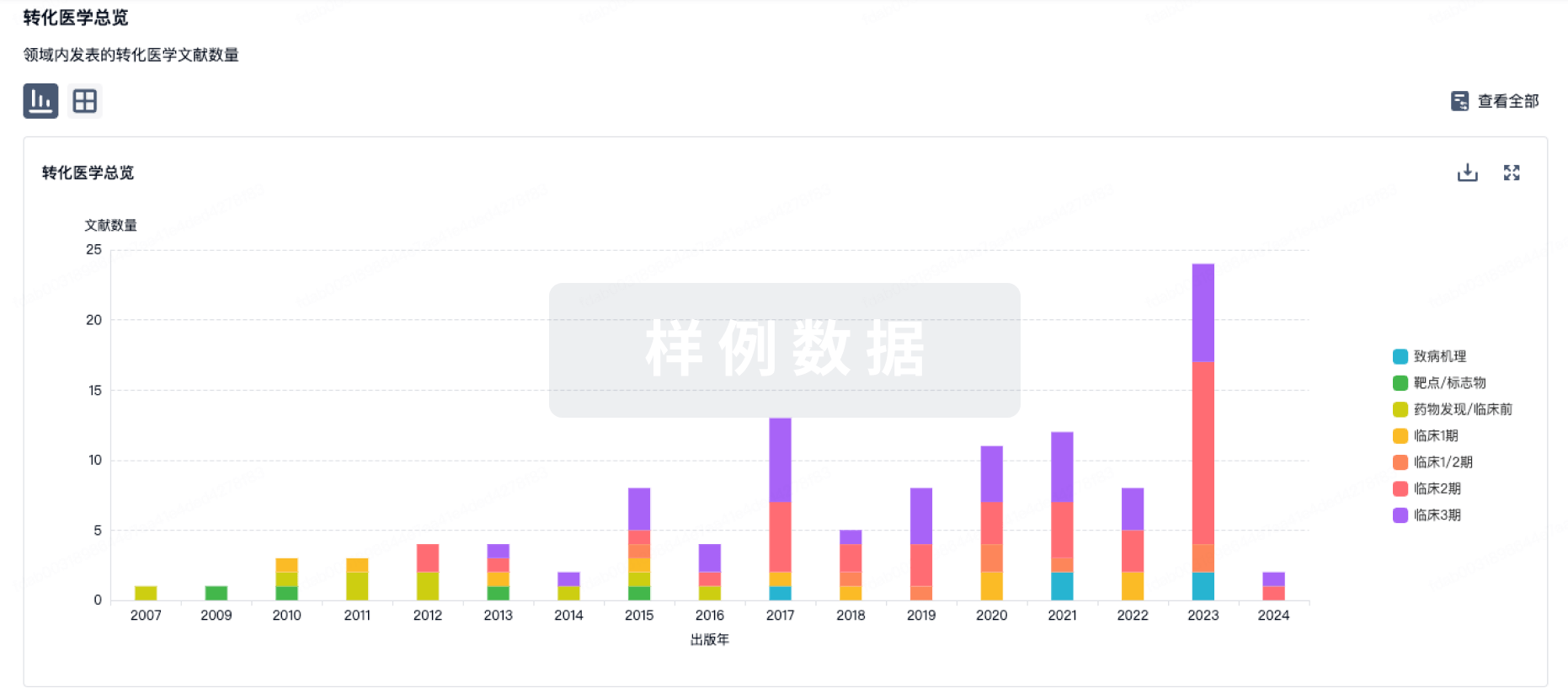
药物交易
使用我们的药物交易数据加速您的研究。
登录
或
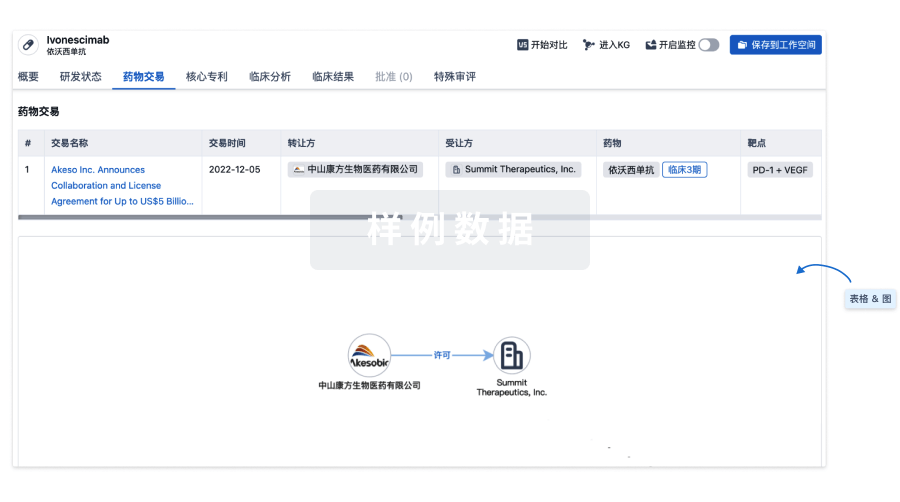
核心专利
使用我们的核心专利数据促进您的研究。
登录
或

临床分析
紧跟全球注册中心的最新临床试验。
登录
或
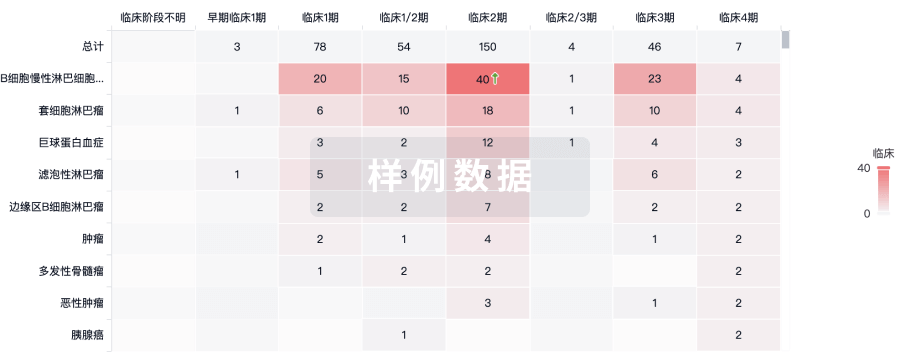
批准
利用最新的监管批准信息加速您的研究。
登录
或
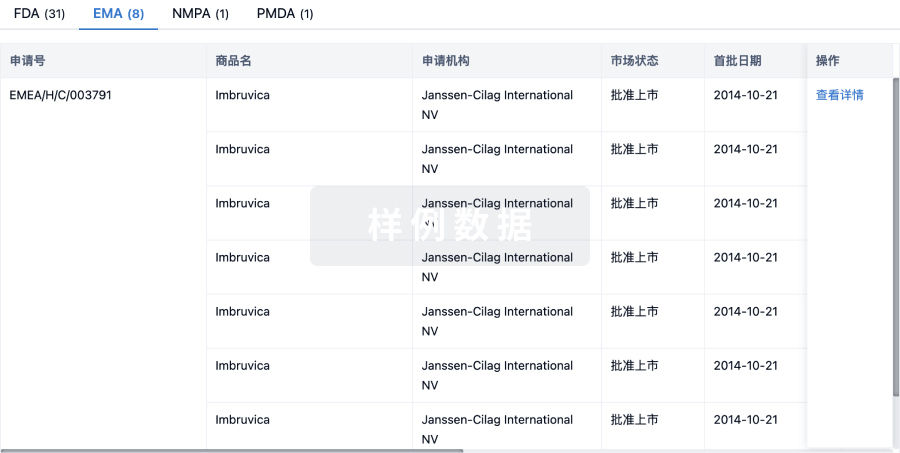
特殊审评
只需点击几下即可了解关键药物信息。
登录
或
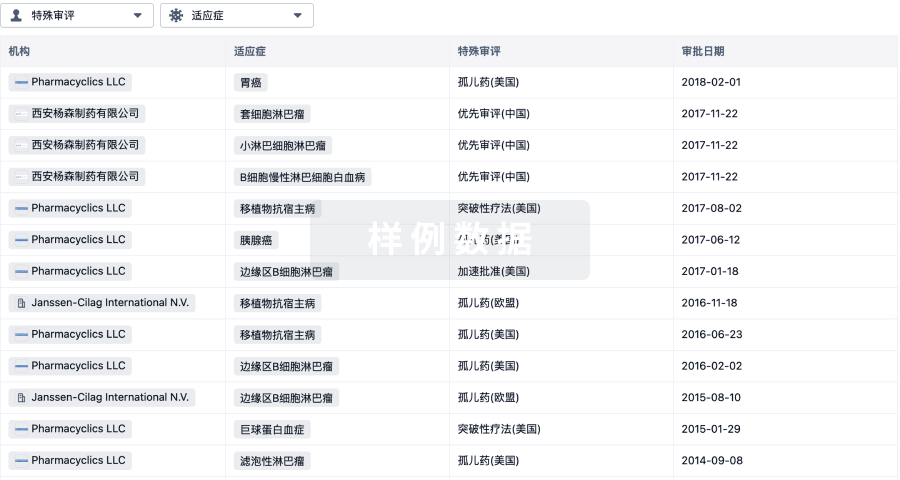
生物医药百科问答
全新生物医药AI Agent 覆盖科研全链路,让突破性发现快人一步
立即开始免费试用!
智慧芽新药情报库是智慧芽专为生命科学人士构建的基于AI的创新药情报平台,助您全方位提升您的研发与决策效率。
立即开始数据试用!
智慧芽新药库数据也通过智慧芽数据服务平台,以API或者数据包形式对外开放,助您更加充分利用智慧芽新药情报信息。
生物序列数据库
生物药研发创新
免费使用
化学结构数据库
小分子化药研发创新
免费使用



